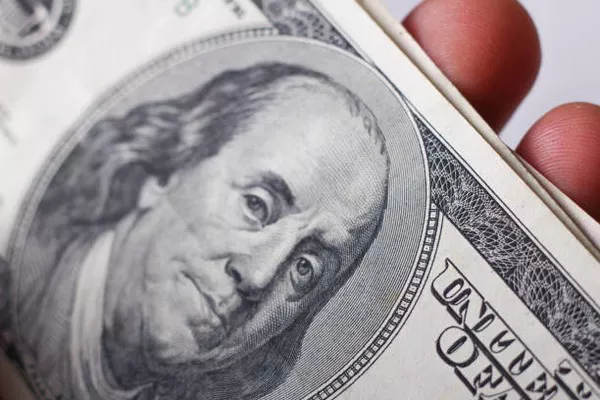In the complex world of international finance, the strength of a currency holds significant implications for global economic stability and trade dynamics. The dominance of the United States dollar (USD) as a reserve currency has rendered its strength a subject of keen interest and scrutiny worldwide. This article delves into the multifaceted factors driving the dollar’s strength, including economic indicators, Federal Reserve policies, global market dynamics, currency comparisons, historical context, impacts on trade and investment, and future outlook.
Explanation of the Dollar’s Strength
A currency is considered strong when it maintains or appreciates in value relative to other currencies over time. The strength of a currency reflects investor confidence in the stability and prospects of the issuing country’s economy. For the USD, being the world’s primary reserve currency, its strength not only signifies the robustness of the US economy but also influences global financial markets, trade flows, and investment decisions. A strong dollar typically benefits American consumers by making imports cheaper, but it can hinder export competitiveness and may lead to trade imbalances.
Economic Indicators
Several key economic indicators influence the strength of the dollar:
Interest Rates: Higher interest rates tend to attract foreign capital inflows, driving up the demand for the dollar and thus its value. The Federal Reserve’s decisions regarding monetary policy, including adjustments to the federal funds rate, directly impact interest rates and, consequently, the dollar’s strength.
Inflation: Moderate inflation rates are generally conducive to currency strength, as they preserve purchasing power. Inflationary pressures erode the value of a currency, leading investors to seek alternatives, whereas low inflation or deflation can enhance a currency’s appeal.
Trade Balance: A positive trade balance, where a country exports more than it imports, can bolster confidence in its currency. Conversely, persistent trade deficits may exert downward pressure on the currency’s value, as it implies greater reliance on foreign financing.
Federal Reserve Policies
The Federal Reserve, as the central bank of the United States, plays a pivotal role in shaping the dollar’s strength through its monetary policy decisions. Actions such as interest rate hikes or cuts, quantitative easing programs, and forward guidance influence market expectations and investor sentiment. For instance, tightening monetary policy by raising interest rates can strengthen the dollar by attracting foreign capital seeking higher yields on US assets. Conversely, accommodative policies aimed at stimulating economic growth may weaken the dollar as investors seek higher returns elsewhere.
Global Market Dynamics
Global events and market sentiment often trigger a “flight to quality,” wherein investors flock to safe-haven assets like the US dollar during times of uncertainty or volatility. Geopolitical tensions, economic crises, or disruptions in financial markets can spur demand for the dollar as investors seek refuge from riskier assets. Additionally, the dollar’s status as the primary reserve currency and its deep liquidity in global markets contribute to its attractiveness during turbulent times.
Comparison with Other Currencies
The strength of the dollar is frequently assessed in comparison to other major currencies, including the euro (EUR), Japanese yen (JPY), British pound (GBP), and Swiss franc (CHF). Currency exchange rates reflect the relative value of different currencies, with fluctuations driven by various factors such as economic performance, monetary policies, geopolitical developments, and market sentiment. Tracking the dollar’s performance against its peers provides insights into its global standing and competitiveness in international trade and finance.
Historical Context
Understanding the historical context of the dollar’s strength offers valuable insights into past trends and cycles. Over the decades, the dollar has experienced periods of appreciation and depreciation influenced by economic shifts, policy decisions, and geopolitical events. Notable episodes include the Plaza Accord in 1985, which led to a coordinated effort to devalue the dollar to address trade imbalances, and the period of dollar strength during the late 1990s and early 2000s fueled by robust US economic growth and fiscal discipline. Historical patterns can inform projections about future movements in the dollar’s value.
Impact on Trade and Investment
A strong dollar can have significant implications for international trade, imports, exports, and foreign investment:
Trade Competitiveness: A strong dollar can make US exports more expensive for foreign buyers, potentially reducing export volumes and competitiveness in global markets. Conversely, imports become cheaper for American consumers, leading to increased consumption of foreign goods.
Foreign Investment: Foreign investors may find US assets more attractive during periods of dollar strength, seeking higher returns and capital appreciation. However, a persistently strong dollar may also deter foreign investment in US assets due to concerns about competitiveness and export-driven growth.
Future Outlook
The future trajectory of the dollar’s strength remains subject to numerous variables, including economic conditions, policy developments, geopolitical tensions, and market sentiment. Expert predictions often consider a range of scenarios and factors, such as potential shifts in monetary policy, trade dynamics, inflation trends, and global economic growth. While forecasting currency movements with precision is inherently challenging, ongoing analysis of economic indicators and policy developments can provide valuable insights into the potential direction of the dollar’s value.
In conclusion, the strength of the US dollar is influenced by a complex interplay of economic, financial, and geopolitical factors. Understanding the drivers behind the dollar’s strength is essential for policymakers, investors, and businesses navigating the global economy. By examining economic indicators, Federal Reserve policies, global market dynamics, currency comparisons, historical trends, and impacts on trade and investment, stakeholders can better anticipate and respond to fluctuations in the dollar’s value, thereby mitigating risks and capitalizing on opportunities in an interconnected world.


